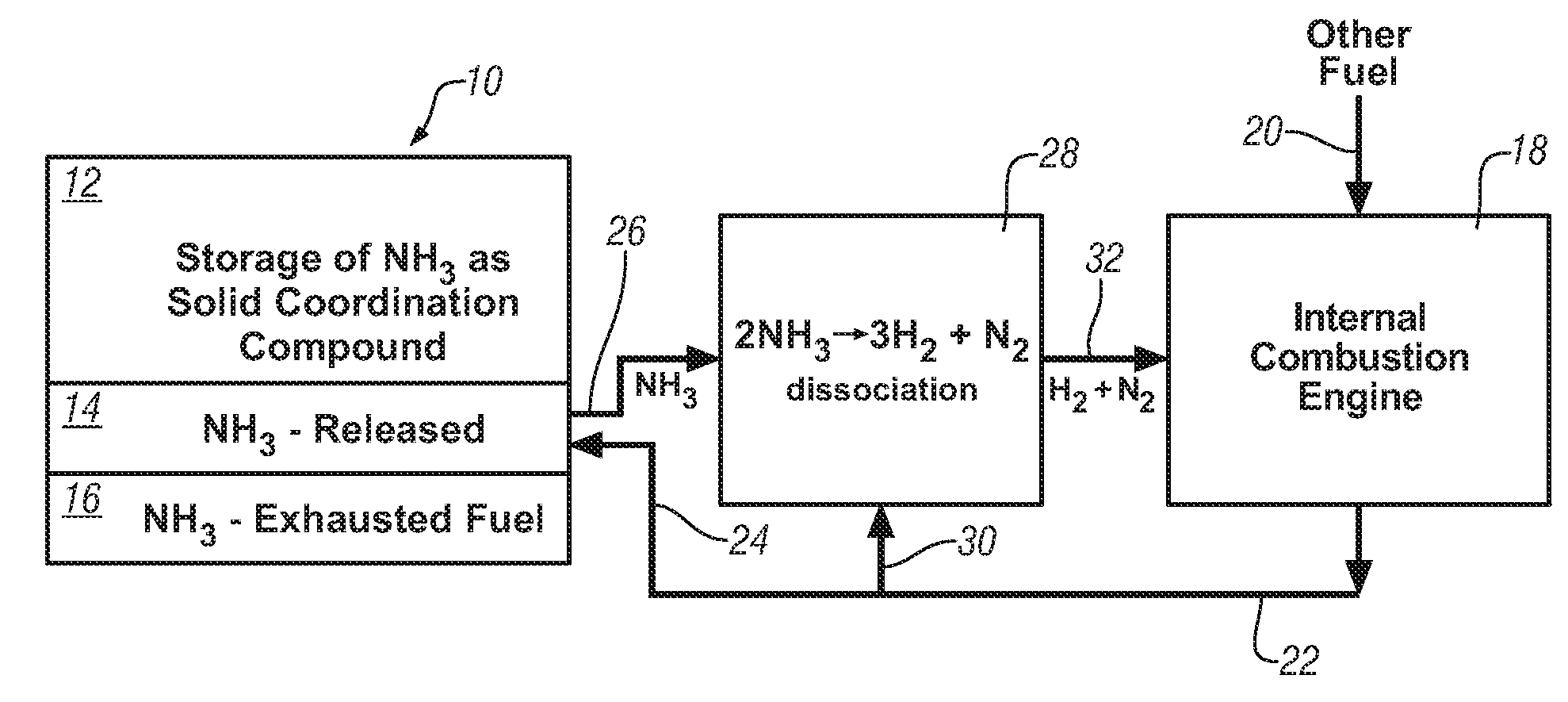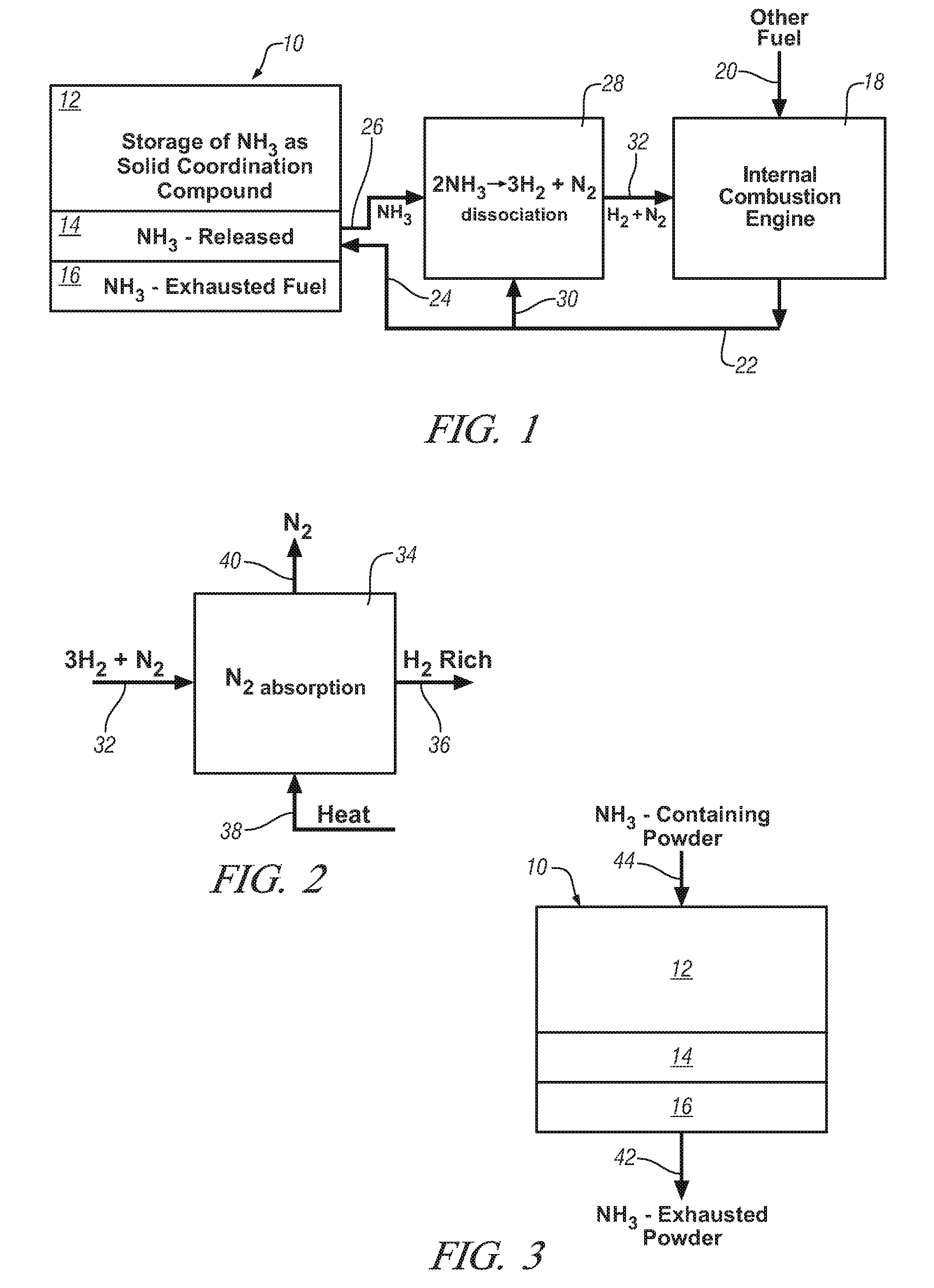Ammonia storage for on-vehicle engine
a technology for ammonia storage and on-board vehicles, which is applied in the direction of machines/engines, iron sulfates, separation processes, etc., can solve the problems of difficult to safely store hydrogen gas on-board vehicles, and achieve the effect of efficient and reversible processes
- Summary
- Abstract
- Description
- Claims
- Application Information
AI Technical Summary
Benefits of technology
Problems solved by technology
Method used
Image
Examples
experimental examples
[0030]The following examples illustrate the absorption of ammonia as a ligand into various metal compounds and the subsequent release of ammonia from the respective compounds.
example 1
[0031]5 grams of ferrous (F+2) sulfate was ground to fine powder of close to one micron particle size and placed in a glass tube flow-through reactor. The powder was exposed to flow of ammonia gas (600 ml / min) for one hour. The weight of the powder increased during the exposure to ammonia and the sample was determined as having absorbed close to six ammonia molecules per formula unit (e.g., FeII(NH3)about 6SO4). The sample was saturated with ammonia in less than 30 minutes. One hundred milligrams of the sample was placed in a thermogravimetric analyzer and heated at 5 degrees per minutes under flow of argon gas. The sample weight was reduced in two steps and at 250° C. the ferrous sulfate sample released close to 5.5 mole ammonia per formula unit.
[0032]Four grams of the sample saturated with ammonia in this example, was placed in a flow-through glass tube reactor and heat treated at 250° C. under flow of argon. The sample was weighed after 30 minutes heat treatment. The sample weigh...
example 2
[0034]Five grams of hydrated ferrous sulfate was placed in a glass tube reactor. The sample was heat treated under argon gas to 250° C. for 30 minutes to remove the water of crystallization. The dehydrated sample was cooled to room temperature and exposed to flowing stream of ammonia for 30 minutes. The sample weight was measured. The sample absorbed close to six ammonia molecules per formula weight of ferrous sulfate. The absorbed ammonia was then released by switching the ammonia gas to argon gas and heat treating the sample to 250° C. and marinating the heat for 30 minutes. The ammonia absorption and removal processes were repeated four times. It is observed that dehydrated iron sulfate absorbs and releases ammonia gas at a faster rate than was obtained with the anhydrous ferrous sulfate sample. Also, the color change of the ferrous sulfate powder, from light blue to dark blue as ammonia was absorbed and from dark blue to light blue as ammonia is released, occurred much faster th...
PUM
 Login to View More
Login to View More Abstract
Description
Claims
Application Information
 Login to View More
Login to View More - R&D
- Intellectual Property
- Life Sciences
- Materials
- Tech Scout
- Unparalleled Data Quality
- Higher Quality Content
- 60% Fewer Hallucinations
Browse by: Latest US Patents, China's latest patents, Technical Efficacy Thesaurus, Application Domain, Technology Topic, Popular Technical Reports.
© 2025 PatSnap. All rights reserved.Legal|Privacy policy|Modern Slavery Act Transparency Statement|Sitemap|About US| Contact US: help@patsnap.com


